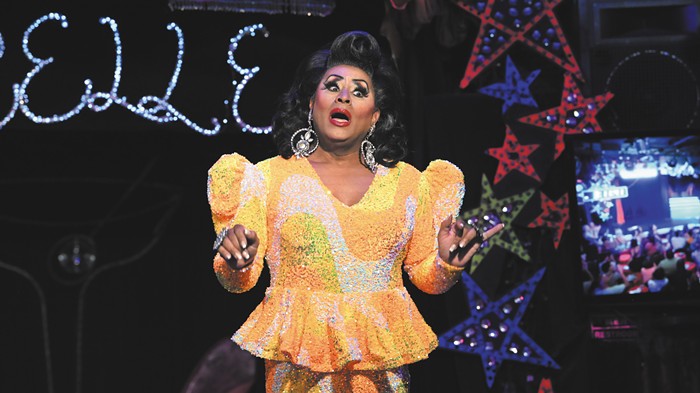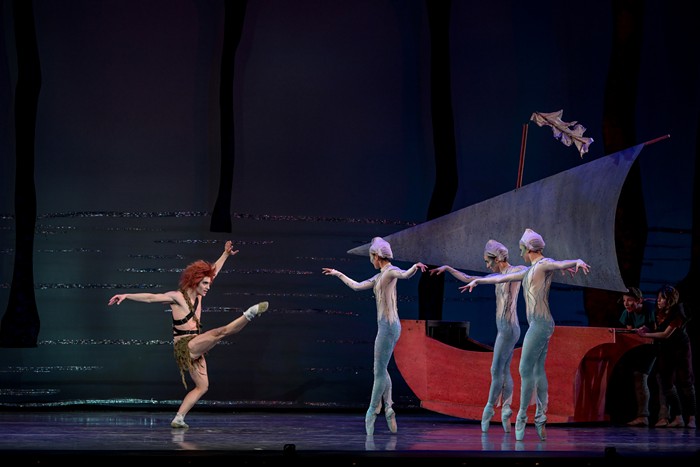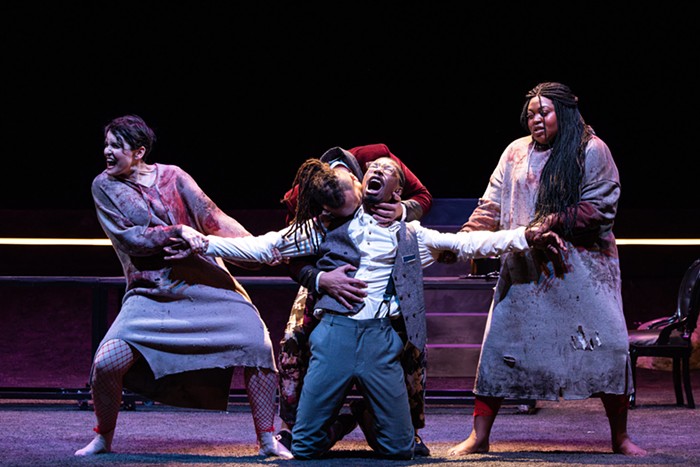Artists Repertory Theatre
Through April 29
Sometimes it seems like the big ticket musical with a movie-sized budget is the only kind of theater that makes money anymore. Occasionally more introspective plays slip through the cracks, but they almost always seem to have some sort of shock-value hook. Example: Paula Vogel's How I Learned to Drive was bought by over 50 theaters across the nation a few years back. It's a great play that deserved its success, but it's also about pedophilia. It's hard NOT to write a gripping play when your topic is pedophilia--believe me, I've tried.
Similarly, Charles Mee's latest, Big Love, is finally receiving the financial backing it deserves with an upcoming full-scale production at Seattle's well-funded Intiman Theatre. Its story: Fifty women brutally murder the 50 cousins they are betrothed to. Incest, sexual violence, and carnage. Again, it's hard to fall with those beams at the base of your Eiffel Tower.
How fascinating, then, that a play has finally hit the mainstream that is neither spectacle-oriented, nor bludgeoningly controversial. Conor MacPherson's, The Weir, was a hit in London, and has now moved across the ocean to big-boy American theaters like the A.R.T., where I fully expect it to be equally popular. I expect this because no matter how cynical and/or sensational audience expectations have become, people still love--and will always love--a darn good story, craftily told. The Weir is a celebration of the craft of storytelling.
Each character that frequents the play's pub setting--Finbar, the local wealthy loudmouth; Jim, the Mr. Fix-It who lives with his mother; Benicio Del Toro, the gay German who loves strudel; and the mysterious Valerie--is haunted by something, and MacPherson's deceptively simple storytelling device somehow manages to expose those haunts with both conciseness and tenderness. It's a fabulous technique because it is so self-sufficient. There is no high drama in this play; no drastic character changes or explosive moments of conflict. The action is quiet and thoughtful throughout; MacPherson's stories lead the charge, and that's really all that is needed to make these people utterly compelling.
A word of warning: after having seen this play twice in London and now once more in the states, I have concluded that it needs nothing more than voices to speak it for it to be captivating. Lighting, set design, etc. are nice bonuses, but ultimately irrelevant--the text is that good. However, the one aspect of it that will be apparent in any production is its distinct "Irishness." If you are overly sensitive to bad Irish accents, I suggest you tread very carefully with the A.R.T's version. Otherwise, the acting is quite competent, so please don't miss it. Plays as subtle as this one are in danger of going extinct, and need your help!


















